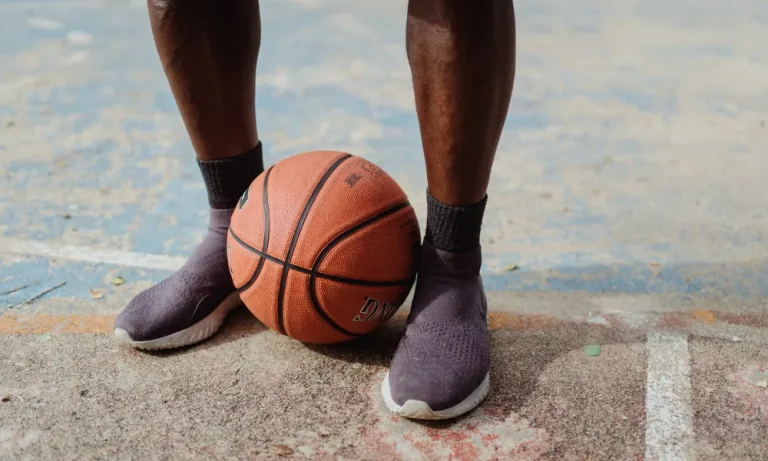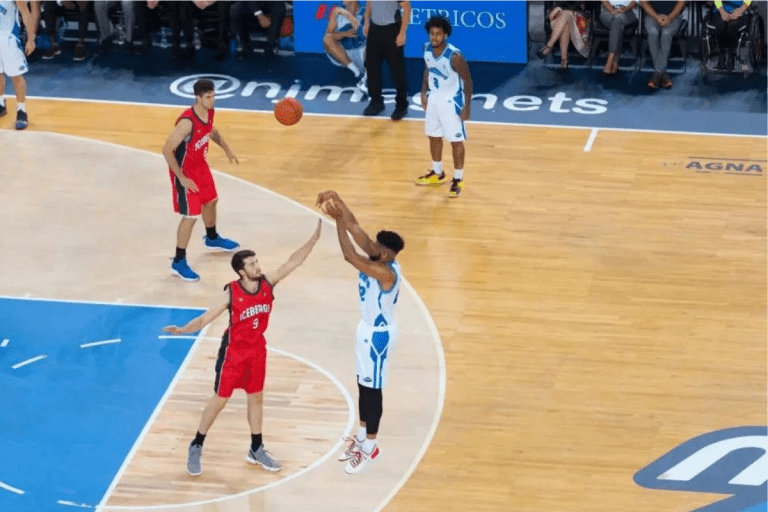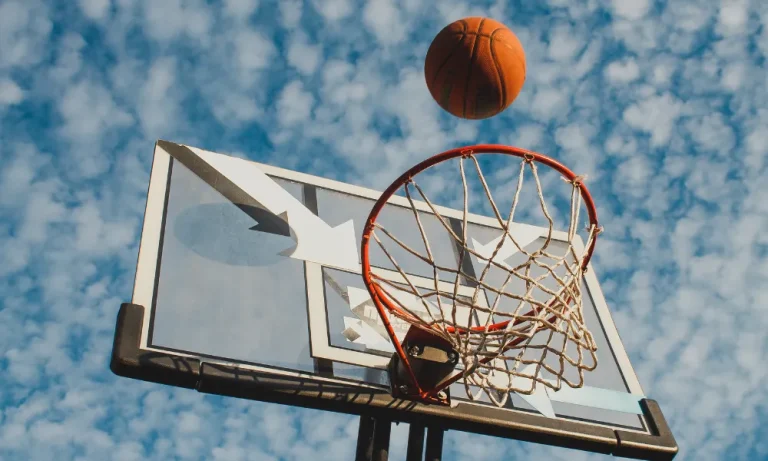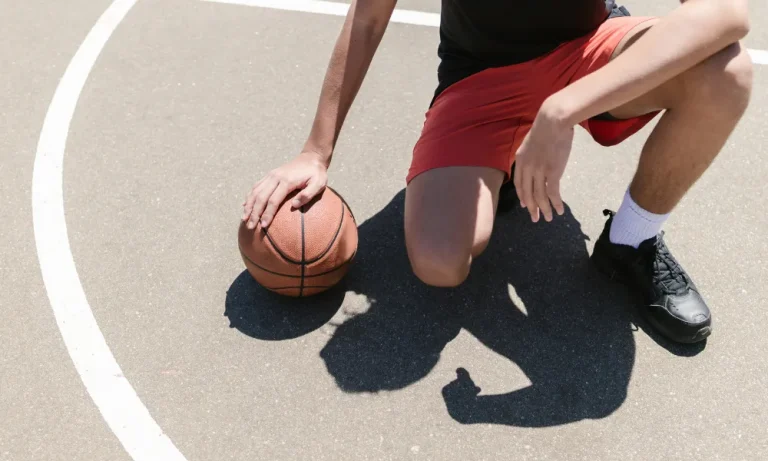How Often Do Basketball Players Change Shoes?
How often do basketball players change shoes? It’s a question that sneaker enthusiasts and sports fans alike ponder. Well, get ready to lace up as we dive into the fascinating world of basketball footwear. From the wear and tear on the court to personal preferences and superstitions, we’ll explore the factors that influence shoe changes.
Factors Influencing Shoe Changes
When it comes to the frequency of shoe changes among basketball players, several factors come into play.
1. Impact of Shoe Wear and Tear on Performance
Basketball is an intense sport that puts significant strain on players’ footwear. The constant running, jumping, and quick movements on the court can lead to wear and tear on the shoes. As shoes deteriorate, their performance-enhancing features, such as cushioning and traction, diminish. This can negatively affect a player’s performance, making it necessary to change shoes regularly.
2. Role of Player Preferences and Superstitions
Basketball players, like any athlete, have their own preferences and superstitions when it comes to their footwear. Some players may believe that wearing a specific brand or model of shoes brings them luck or enhances their performance. Others may have specific preferences for the fit, style, or features of their shoes. These personal preferences and superstitions can influence how often players change their shoes.
3. Influence of Endorsement Deals and Sponsorships
Endorsement deals and sponsorships play a significant role in the world of basketball. Many players have lucrative contracts with shoe companies, which often require them to wear specific brands or models of shoes during games. These endorsement deals can influence how frequently players change their shoes, as they may need to showcase the latest designs or promote new releases.
Shoe Lifespan and Durability
Basketball shoes, on average, have a lifespan of 4 to 6 months, depending on factors such as frequency of use, playing style, and court conditions. This timeframe accounts for the wear and tear that naturally occurs during rigorous basketball activities. It’s important to be aware of this lifespan to ensure that shoes are replaced before their performance begins to decline.
Durability of Different Shoe Brands and Models
Durability varies among shoe brands and models. Some brands prioritize durability, utilizing high-quality materials and reinforced construction. Others may focus more on lightweight and responsive features, sacrificing durability to some extent. Researching and reading reviews can help players identify brands and models known for their durability, making them a wise investment.
Tips to Prolong the Lifespan of Basketball Shoes
To extend the lifespan of their basketball shoes, players can follow these tips:
- Properly clean and maintain shoes regularly, removing dirt and debris that can cause damage.
- Rotate between multiple pairs of shoes to distribute wear evenly.
- Use shoe inserts or insoles to provide additional cushioning and support.
- Avoid wearing basketball shoes for activities other than playing basketball to prevent unnecessary wear and tear.
By following these tips, players can maximize the durability of their basketball shoes and enjoy optimal performance for a longer duration.
Frequency of Shoe Changes
When it comes to the frequency of shoe changes among basketball players, there are various factors at play.
1. Varying Tendencies among Professional Basketball Players
Professional basketball players exhibit different tendencies when it comes to changing their shoes. Some players prefer to stick with a single pair throughout a season, believing that the shoes mold to their feet and provide a consistent feel. On the other hand, many players opt for frequent shoe changes, aiming to maintain optimal performance with fresh and supportive footwear.
2. Impact of Different Playing Conditions and Surfaces
Playing conditions and surfaces can greatly impact the frequency of shoe changes. Outdoor courts, with their rougher surfaces and exposure to elements, tend to cause more wear and tear on shoes compared to indoor courts. Additionally, playing on dusty or slippery courts may necessitate more frequent shoe changes to ensure proper traction and stability.
3. Insights into the Average Frequency of Shoe Changes
While the frequency of shoe changes can vary among players, the average tends to range from every few games to every few weeks. Factors such as personal preferences, playing style, and shoe durability all contribute to this variability. Players who rely heavily on explosive movements and quick cuts may find themselves changing shoes more frequently to maintain optimal performance.
Benefits of Regular Shoe Changes
Regularly changing your basketball shoes can have significant benefits for both injury prevention and performance enhancement.
1. Preventing Injuries and Improving Performance
Regular shoe changes can help prevent injuries by ensuring proper support and cushioning. Over time, the cushioning materials in shoes can wear down, leading to reduced shock absorption and increased stress on the feet and joints. By changing shoes, players can maintain optimal support and reduce the risk of overuse injuries such as shin splints or plantar fasciitis.
2. Advantages of Having Multiple Pairs of Shoes
Having multiple pairs of basketball shoes offers several advantages. Firstly, it allows players to rotate their footwear, which distributes the wear and tear more evenly. This extends the lifespan of each pair and ensures consistent performance. Secondly, different shoes may be better suited for specific playing conditions or surfaces. By having multiple pairs, players can choose the most appropriate shoes for each game, optimizing their performance and reducing the risk of injuries.
3. Tips on When to Consider Changing Shoes
Players should consider changing their shoes when they notice significant wear and tear, such as worn-out outsoles, flattened cushioning, or visible signs of damage. Additionally, if they experience discomfort, pain, or decreased performance, it may be time for a new pair. It’s essential to listen to the body and recognize when shoes are no longer providing the necessary support and protection.
FAQs: How Often Do Basketball Players Change Shoes
How often should basketball players change their shoes?
The frequency of shoe changes varies among players. Some change shoes every few weeks, while others may stick with a single pair for several months.
What factors should players consider when deciding to change shoes?
Players should consider the condition of their shoes, signs of wear and tear, any discomfort or decrease in performance, and their personal preferences.
Can changing shoes frequently prevent injuries?
Regularly changing shoes can help prevent injuries by ensuring proper support and cushioning. Fresh shoes provide better shock absorption and reduce the risk of overuse injuries.
Are there any advantages to having multiple pairs of basketball shoes?
Yes, having multiple pairs of shoes allows players to rotate their footwear, extending the lifespan of each pair. It also allows them to choose the most suitable shoes for different playing conditions.
Do professional players change their shoes more often than amateurs?
The frequency of shoe changes can vary among professional and amateur players. While some professionals change shoes frequently, it ultimately depends on individual preferences and playing style.
Conclusion
The frequency of shoe changes in basketball varies from player to player. While some athletes opt for regular changes to maintain peak performance, others prioritize comfort and familiarity. Ultimately, finding the right balance between shoe changes and personal preference is key for basketball players to excel on the court and protect their feet from injuries.





